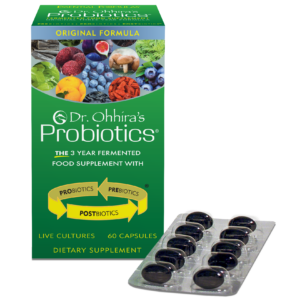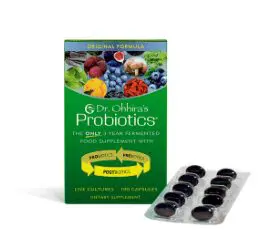Probiotics and Postbiotics are two little known microorganisms that have a surprising number of health benefits. Our team did the research and found all of the most important probiotic statistics and facts so you have all the latest information available in 2021.
Probiotic Statistics
- There between 10 to 30 times more probiotic bacteria and yeast in our body than cells (100 to 300 trillion probiotics vs 10 trillion cells) (Probtioics.org)
- There are enough probiotics in our gut to circle the world 2.5 times! (Dr. Mary Ellen Sanders)
- A normal human body has about 3.5 pounds of probiotics, weighing more than our Brain (3 lbs) but less than our Liver (4 lbs)
- Probiotics are growing in popularity and are estimated to be a 69.3 billion dollar industry by 2023 – a 427% since 2005 (MARKETSandMARKETS)
- More than 400 strains of Probiotics live in our gut, but the top 20 strains count for about 75% of the total number
- Probiotics can help with decreasing lactose intolerance (Jiang et al, 1996)
- Probiotic bacteria produce Vitamin A, Vitamin K, Vitamins B1-B3, B5-B7, B9, B12 and Essential Fatty Acids while increasing digestibility of many other important nutrients (Probiotics – Protection Against Infection)
- Probiotics are commonly consumed through food and drink, but they can also be taken via supplements
- Lactobacillus and Bifidobacterium are the most commonly found species of Probiotic bacteria
Postbiotics Statistics
- Postbiotics are the byproducts of probiotics
- A postbiotic bacterial component called muramyl dipeptide, has been shown to fight Pre-Diabetes and Type II Diabetes by increasing insulin sensitivity (Meridian Chiropractic)
- Unlike probiotics, postbiotics aren’t live so they don’t have as strict production or storage conditions as probiotics. Therefore, postbiotics are more stable and have a longer shelf life (Mindy Hermann, MBA, RDN)
- Because Postbiotics aren’t live, they can boost the gut health of critically ill patients, young children, and premature neonates who are immunocompromised (Mindy Hermann, MBA, RDN)
- Postbiotics can play a beneficial role in the health of developing infants and in healthy term newborns (Mindy Hermann, MBA, RDN)
- Probiotics are known to treat diarrhea, irritable bowel syndrome (IBS), and other conditions related to gut health
- Postbiotics may protect against inflammation caused by some infections such as salmonella among other infections (Meridian Chiropractic)
- different kinds of postbiotics are created based on what your gut bacteria have been eating
- Recent studies suggest that many of the positive effects that have been attributed to probiotics are actually due to postbiotics (Meridian Chiropractic)
-
 Dr. Ohhira’s® Probiotic Supplements with Original Formula$13.95 – $89.95
Dr. Ohhira’s® Probiotic Supplements with Original Formula$13.95 – $89.95 -
 Reg´Activ® Essential ME-3$39.95
Reg´Activ® Essential ME-3$39.95 -
 Dr. Ohhira’s® Probiotics Professional Formula$39.95 – $129.65
Dr. Ohhira’s® Probiotics Professional Formula$39.95 – $129.65





